Future Trends for Multifamily Housing Exteriors
Colors and Finishes
Depending on the manufacturer, the extruded aluminum trim and reveal accents needed to satisfy a certain aesthetic may be available in a choice of primed, clear anodized, specialty anodized, or color matched to satisfy whatever the project requires.
A clear anodized finish is an electrochemical conversion process that deposits an oxide film on the aluminum trim. A natural oxidation process occurs on bare aluminum; however, producing the oxidation process artificially creates a thicker, harder, and more durable “oxide film.” Clear anodized exterior siding is an extremely durable finish and is resistant to most forms of corrosion.
Specialty color anodized trims option finishes may also be available, such as gold anodized, black anodized, and bronze anodized exterior siding option finishes. It is important for the designer to note that anodized finishes can vary from one piece of trim to another. This is one of the characteristics to the anodizing process and must be considered before any orders are placed. Typically, the color of the anodizing will fall within a certain range, which usually can be determined in consultation with the manufacturer.
For simplicity, a stock color may be specified. There has been an explosion of colors available from manufacturers, and intensive color research determines the most trendy colors for multifamily projects. Depending on the manufacturer, there may be a wide choice of stock colors, such as these:
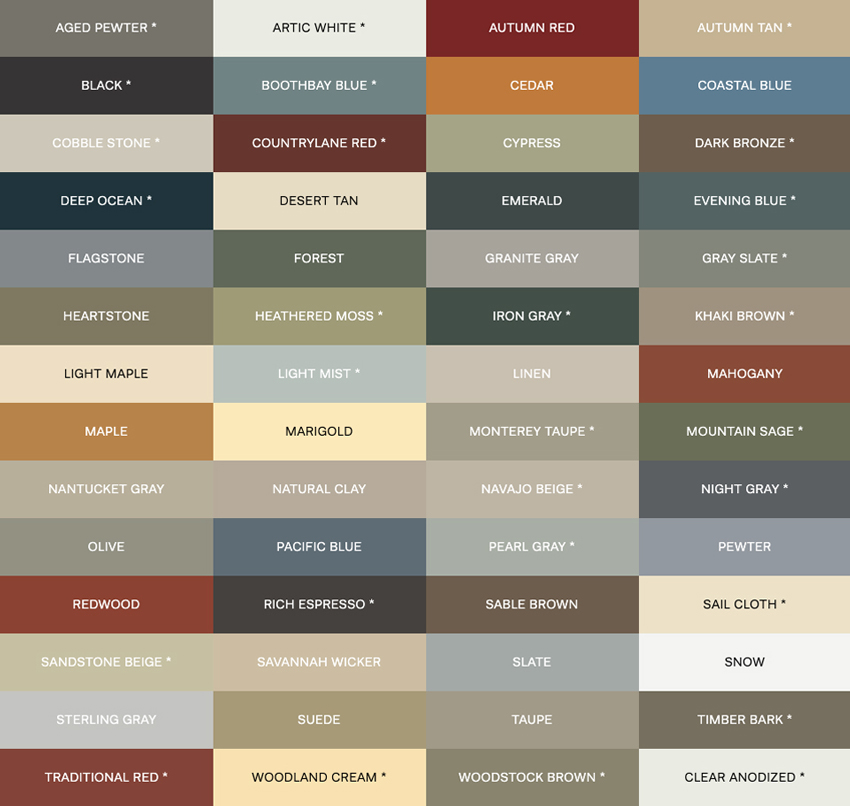
Shown are examples of stock colors that may be available depending on manufacturer.
How Reveals and Trims Add Interest to Multifamily Exteriors
The aesthetic required for today’s successful multifamily development is likely clean, modern, and sharply defined. The range of extruded aluminum reveals that contribute to such a look fall into several categories: vertical reveals, horizontal reveals, outside corners, inside corners, and transition reveals. Let’s consider each individually and review examples.
Vertical Reveal Profiles
Vertical reveals are designed to create a uniform, aesthetically consistent reveal between panel or lap siding. The design of the profile can create a broad vertical accent between siding panels, subtle variation, or even profiles that project beyond the plane of the wall. Here are some types.
This profile gives a consistent reveal while providing flanges to cover the cut edges of the panel. Depending on the manufacturer, a two-piece version of this type of profile may be available, which eases installation because the base and panels are laid out with the cap being attached afterward.
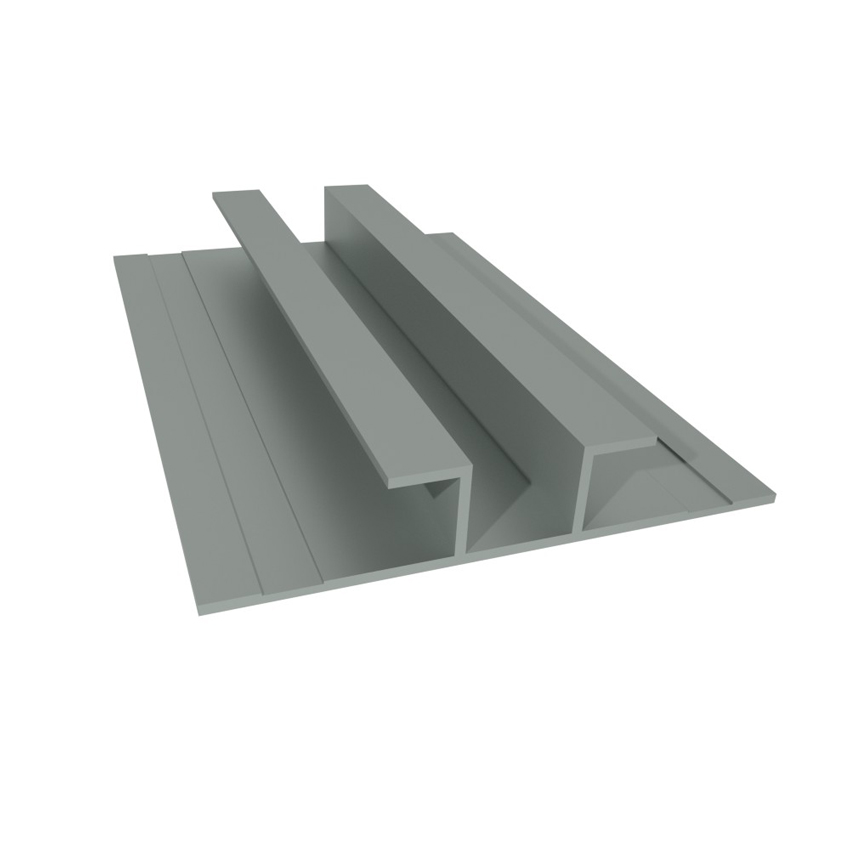
Shown is a one-piece vertical reveal type profile.
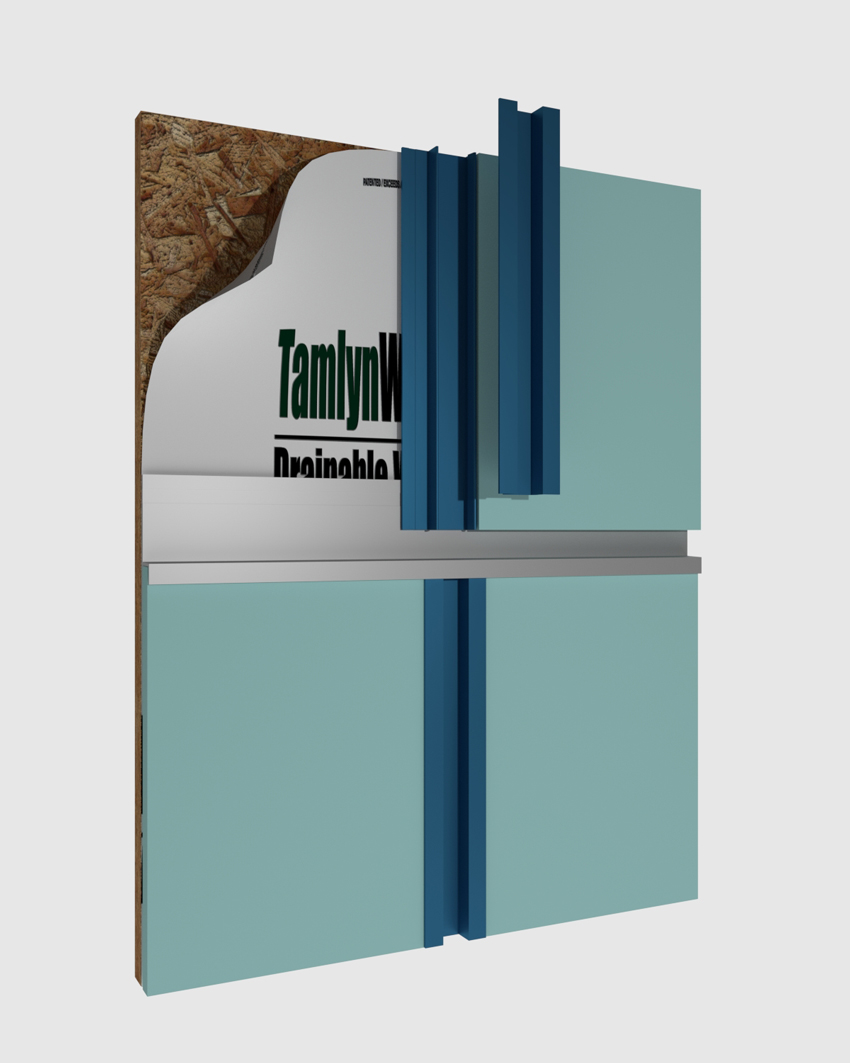
Shown is a two-piece vertical reveal type profile.
This type of reveal profile was specified for CityScape at Belmar, a four-story, 130-unit senior housing complex in Lakewood, Colorado. It was designed by Denver-based Studio Conpletiva. The building configuration is a south-facing C-shaped courtyard with views of a wetland detention pond. According to the architect’s website: “The exterior massing is broken down with a rainscreen panel system, cement fiber panels siding, and a metal panel system with shadow boxes to create interest and scale on the facade.”4 The reveal system pieces were color matched for each section of the vibrant exterior.
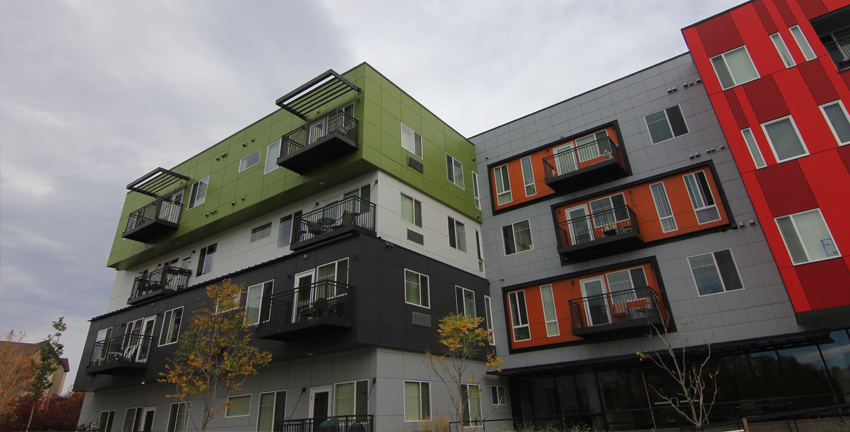
CityScape at Belmar senior housing complex features color-matched aluminum trim profiles.
This type of reveal profile was also specified for the Ryman Lofts, a 60-unit LEED Silver affordable multifamily project in Nashville, Tennessee. It was developed exclusively for artists in downtown Nashville’s Rolling Mill Hill neighborhood and designed by Smith Gee Studio.5 In this case, the reveal system of extruded aluminum was given a clear anodized finish to provide a subtle accent to the colored panels. The project won many awards, including the AIA Middle TN People’s Choice Award.

Ryman Lofts is a 60-unit LEED Silver affordable multifamily project in Nashville.
Vertical Bead Reveal Type of Profile
The vertical bead reveal serves as an aesthetic joint between panels. This is considered by some as a more appealing and secure solution to the “open-wall” vertical joint look popular in many areas.
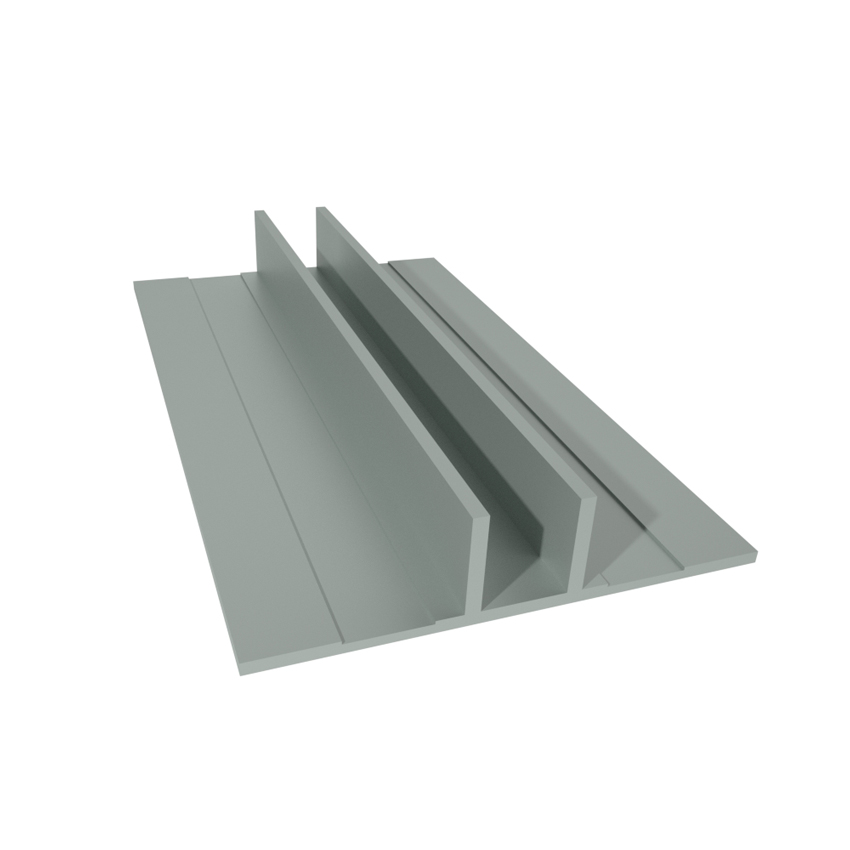
Shown is a bead type of reveal.
This type of profile was specified for the Pierce Apartments, a mixed-use residential project in San Jose, California. It was designed by San Francisco-based Steinberg Hart, which has offices on the West Coast and Shanghai. The bead reveal type of profile was finished in a contrasting black.

A bead type of reveal was used for the Pierce Apartments in San Jose, California.
Horizontal Z Reveal Type of Profile
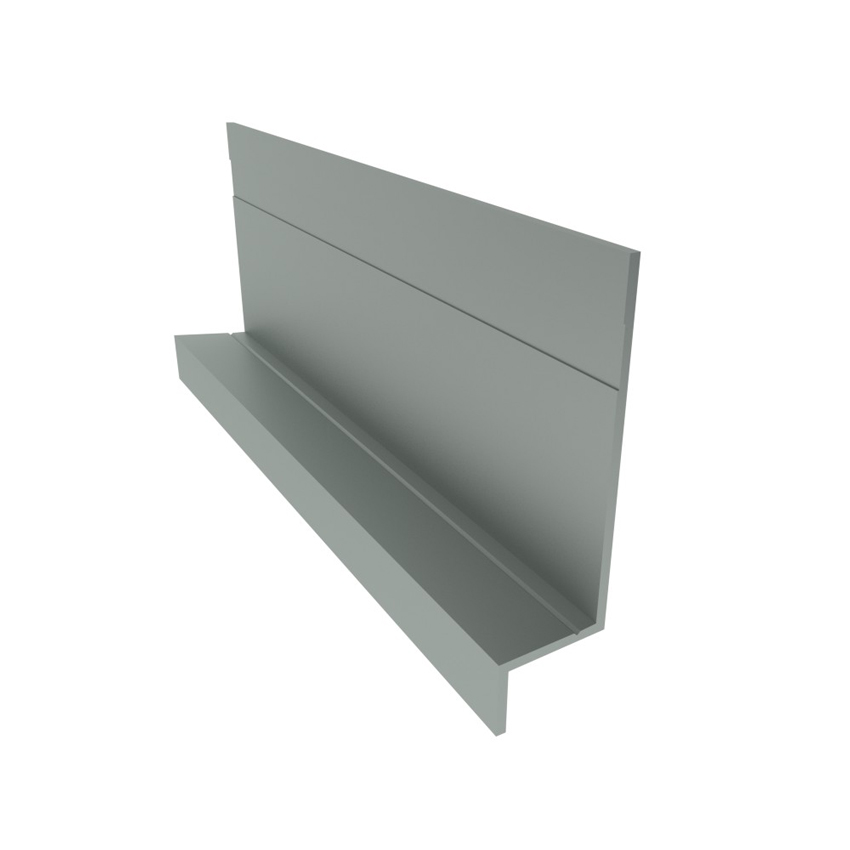
Shown is a Z reveal type of profile.
This type of reveal profile was specified for Apex 55 Apartments, a 231-unit multifamily housing project in Boulder, Colorado. The solid panels juxtapose nicely with horizontal wood siding. The extruded horizontal Z reveals and vertical reveals add interest to the solid panels as well as a clean and consistent transition between the panels. Brick accents add further interest.
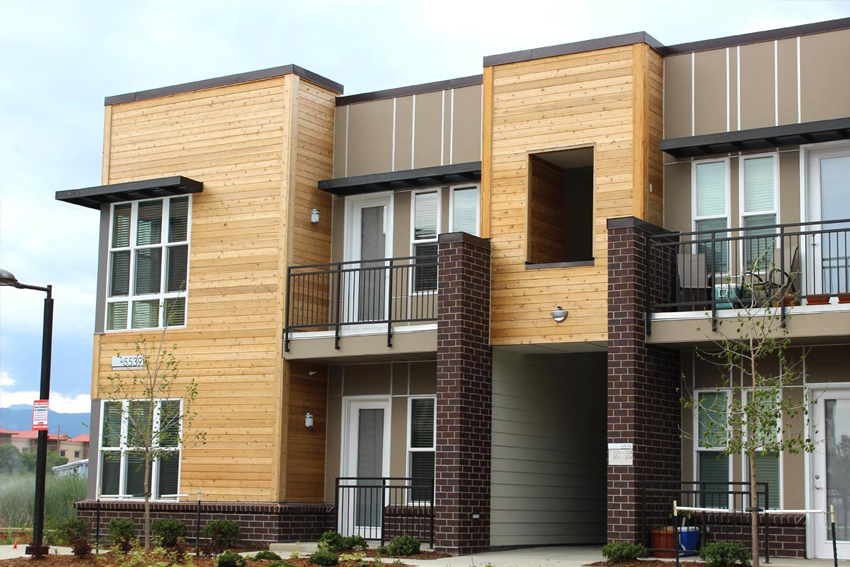
Extruded aluminum reveals were specified for the 55 Apex Apartments in Boulder, Colorado.
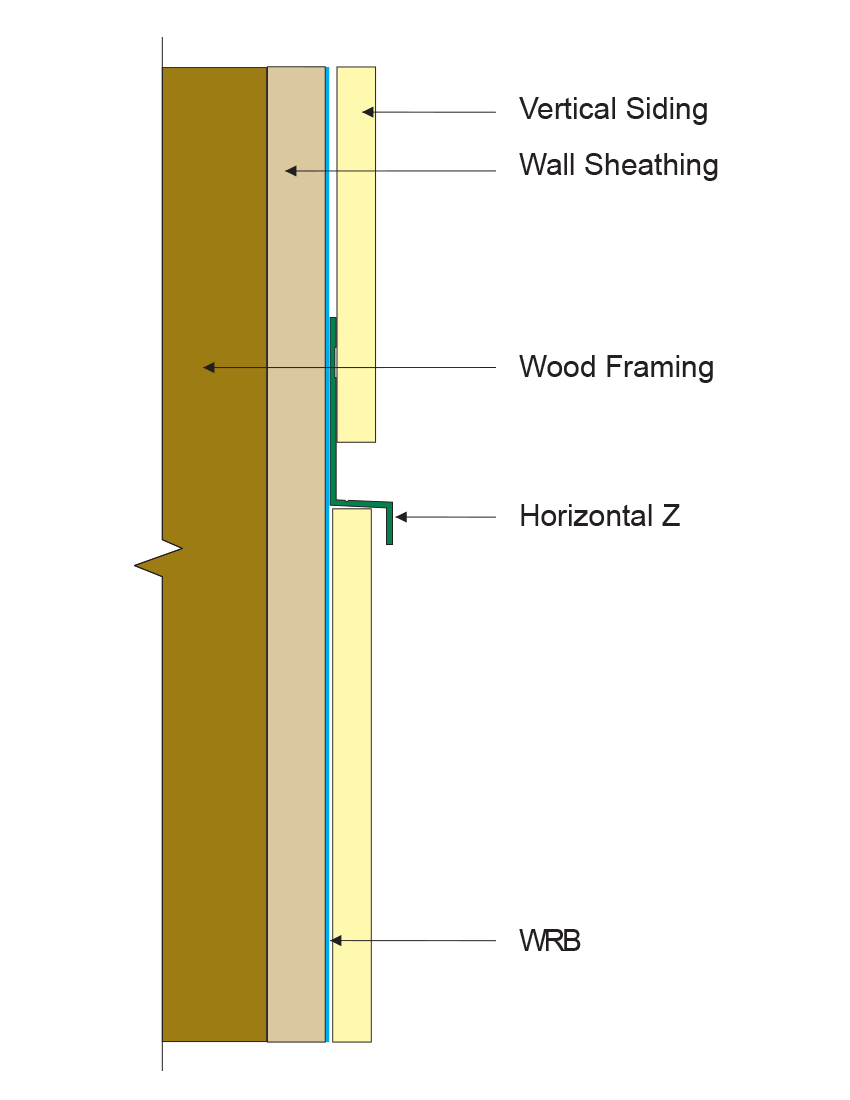
This is how the reveal integrates into the wall assembly, which includes a WRB/drainage plane.









